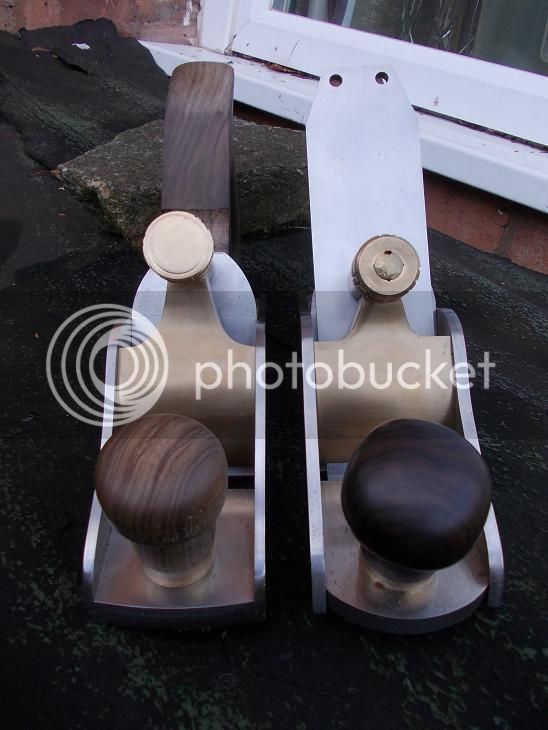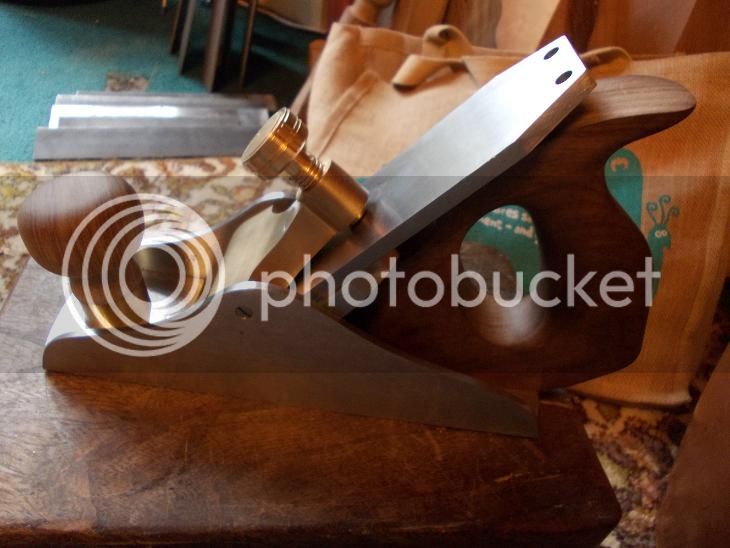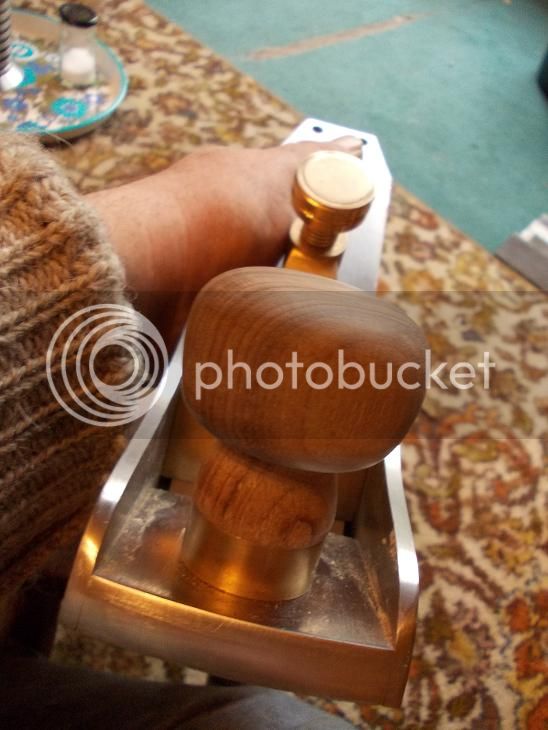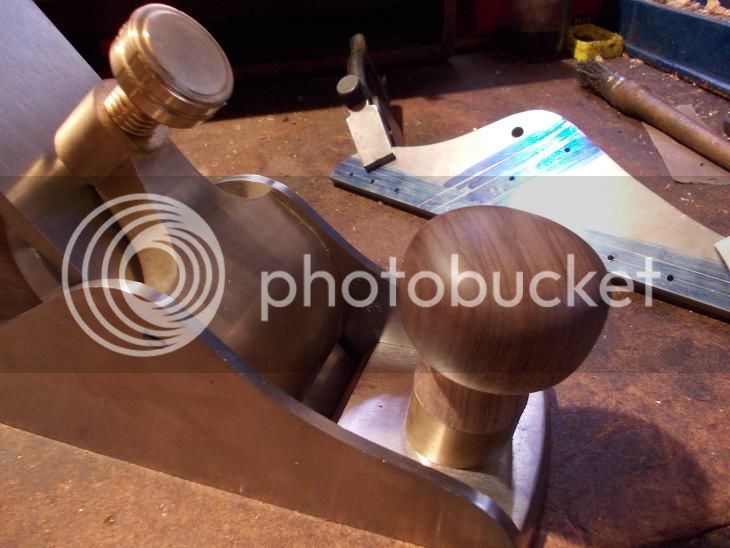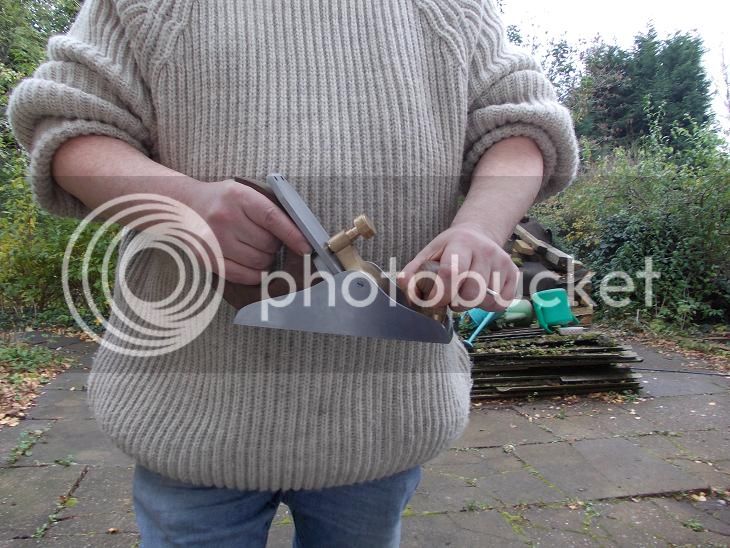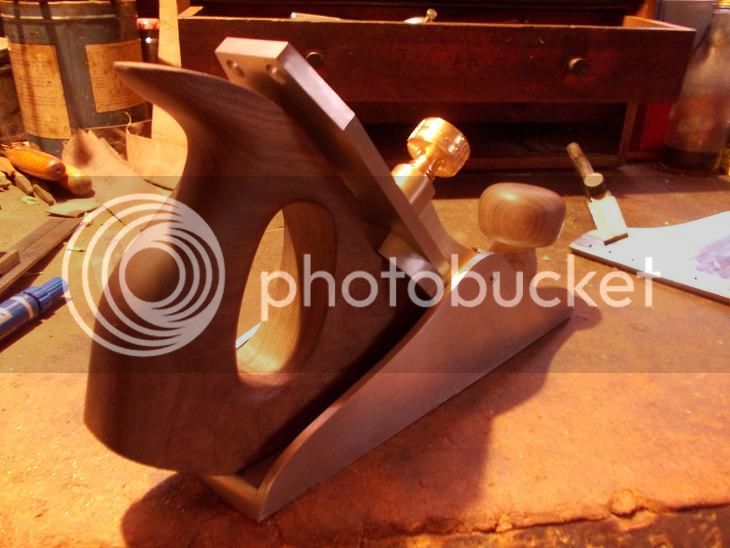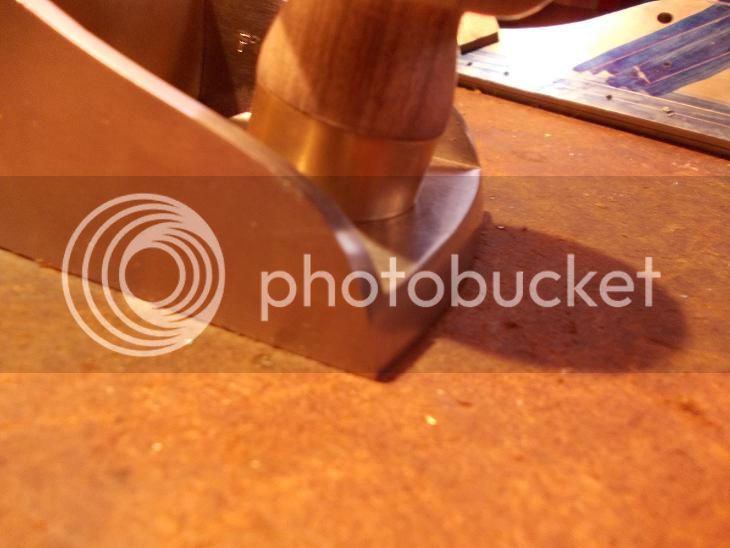Richard T
Established Member
I've been a bit quiet on the plane making posts lately as I was determined to have one finished before I showed it to anyone ..... well it's nearly finished.
I thought I would have a go at Dave D's idea of putting the shell together with pins rather that dovetails. This means a very thick sole - thick enough to take the size of pin you decide on. I chose a 6mm pin which seems to suit a 10mm sole. Beefy darn thing.
I'll skip the hours of shaping, marking, clamping and drilling. Here it is being held together by SS bolts while I put the mild steel pins in.
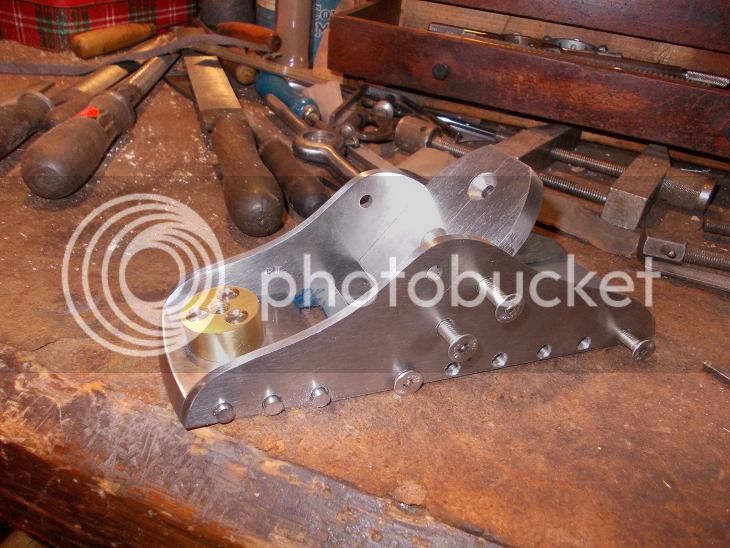
Putting in the next pin - thread cut on the end of a long piece of 6mm wire and held in the vice, screwing the plane on to it.
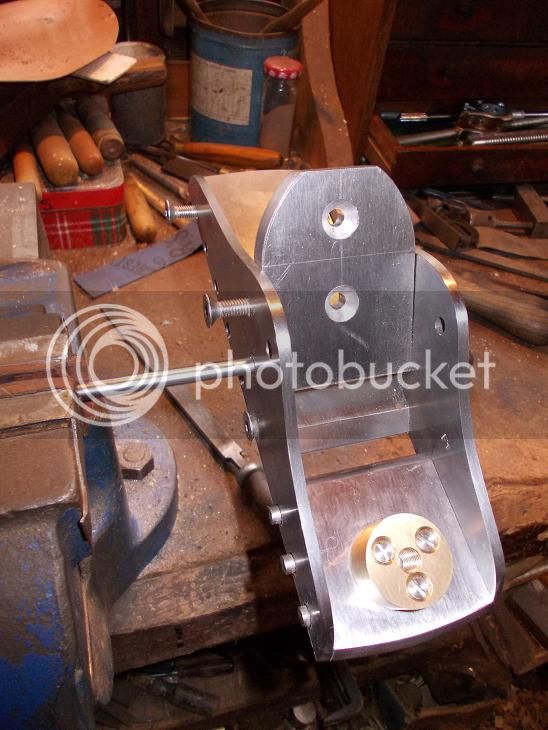
And cutting off the pin with enough steel to rivet.
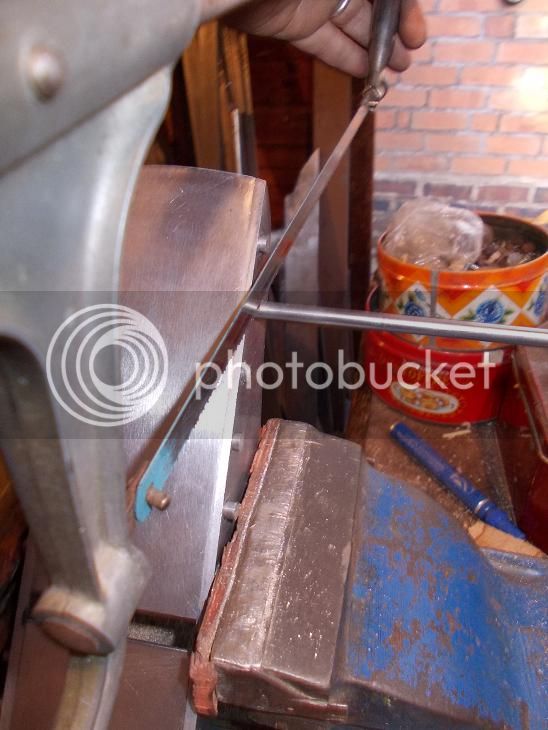
I had put a centre punch mark in the counter sink rim to lock the head of the rivet.
Ready to rivet.
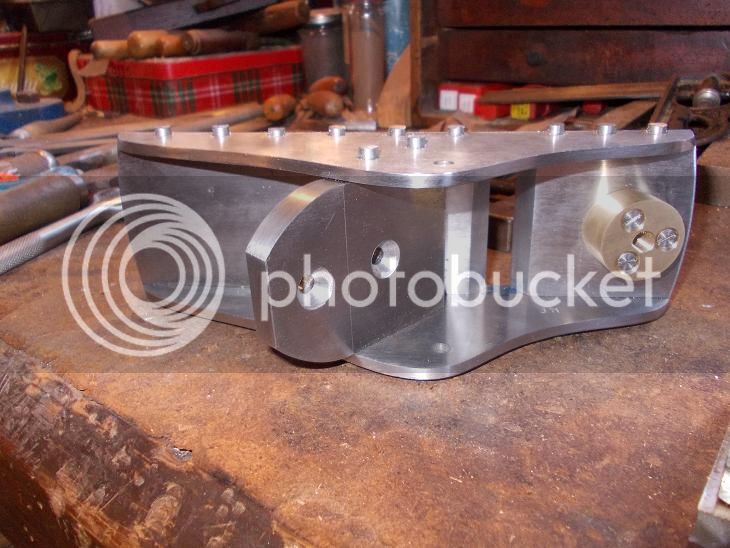
I finally received my 1/2", 14 tpi, square tap and die. It was very expensive and I have waited a long time for it.
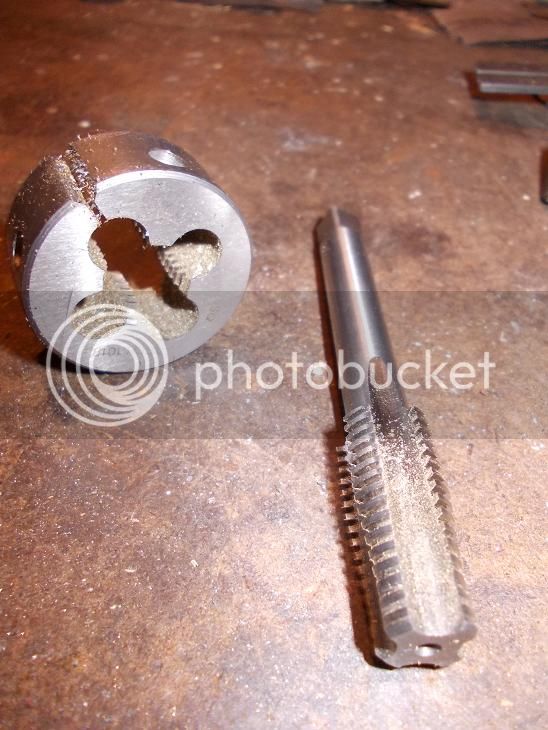
But they do a fantastic job.
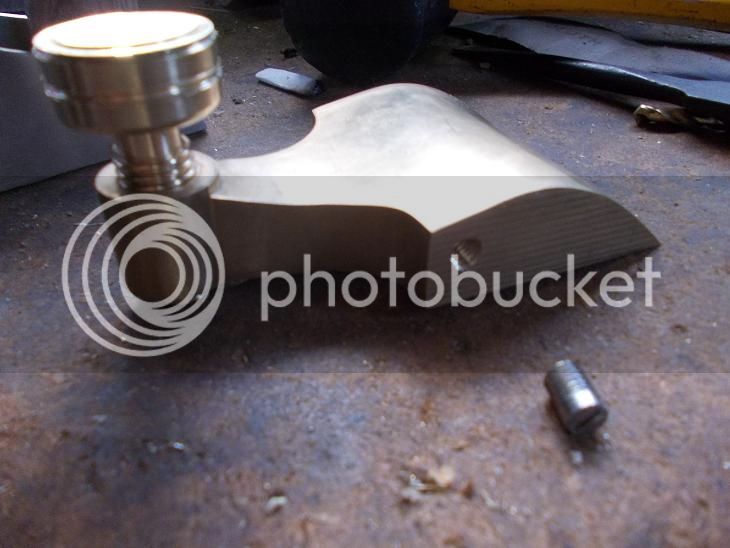
Bit of a jump to the plane as it is now. Still some work to do on the front knob and the iron to harden..... and lapping and putting the last bolt into the handle .....snecking .... I'm sure I will think of more to do...
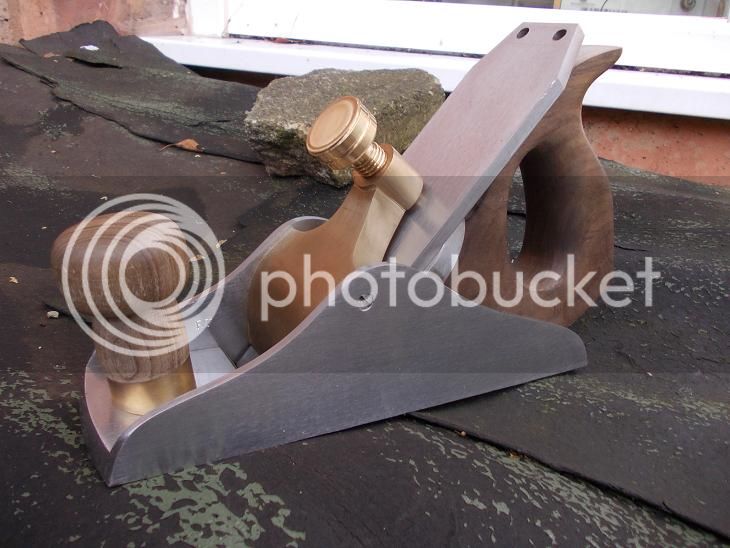
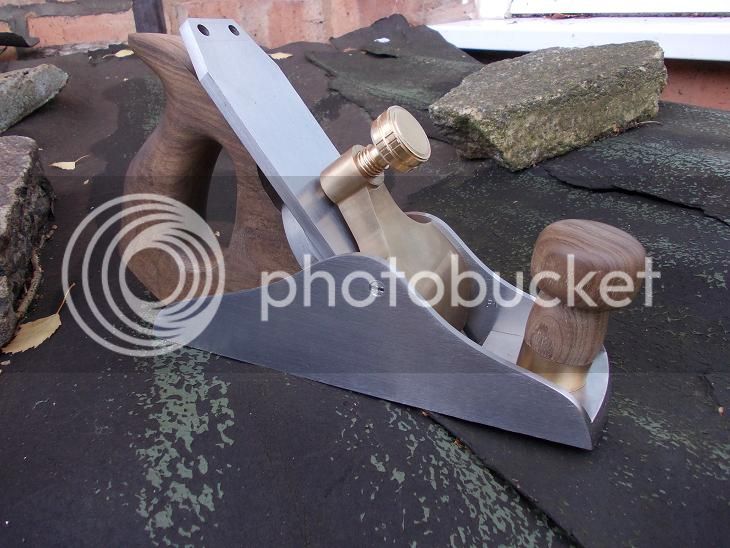
I thought I would have a go at Dave D's idea of putting the shell together with pins rather that dovetails. This means a very thick sole - thick enough to take the size of pin you decide on. I chose a 6mm pin which seems to suit a 10mm sole. Beefy darn thing.
I'll skip the hours of shaping, marking, clamping and drilling. Here it is being held together by SS bolts while I put the mild steel pins in.

Putting in the next pin - thread cut on the end of a long piece of 6mm wire and held in the vice, screwing the plane on to it.

And cutting off the pin with enough steel to rivet.

I had put a centre punch mark in the counter sink rim to lock the head of the rivet.
Ready to rivet.

I finally received my 1/2", 14 tpi, square tap and die. It was very expensive and I have waited a long time for it.

But they do a fantastic job.

Bit of a jump to the plane as it is now. Still some work to do on the front knob and the iron to harden..... and lapping and putting the last bolt into the handle .....snecking .... I'm sure I will think of more to do...






